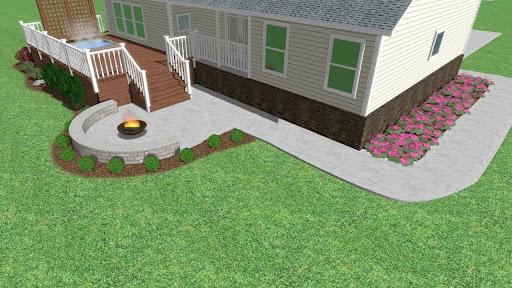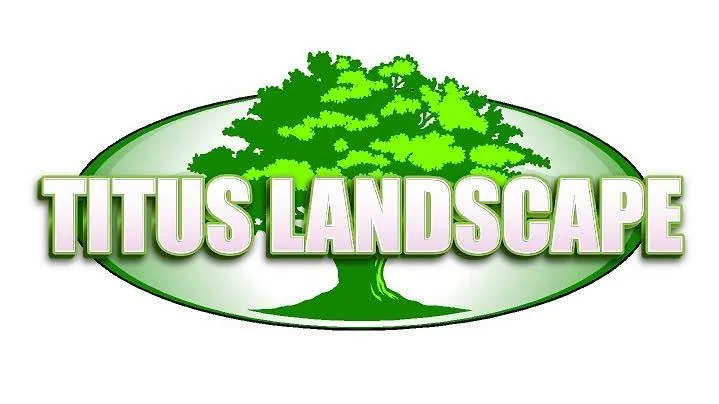Blogs

How Can I Create Low-Maintenance Landscape Design?
To create a low-maintenance landscape design, choose drought-tolerant and native plants, use mulch to suppress weeds and retain moisture, install automatic irrigation systems, and incorporate durable hardscaping materials. Minimize lawn areas and opt for ground covers or gravel to reduce mowing and upkeep.
Creating a low-maintenance landscape design involves strategic planning and the selection of appropriate materials and plants. At Titus Landscape, we emphasize the importance of choosing the right elements to ensure an attractive yet low-effort outdoor space. Here are key strategies to achieve this:
Key Takeaways
Reduce lawn areas to minimize maintenance.
Choose native plants for easier upkeep.
Incorporate hardscaping to lower the need for regular garden care.
Plan for simplicity in design to reduce complexity.
Use efficient watering systems to conserve water and reduce effort.
Select durable materials to ensure longevity and low maintenance.
How to Design a Low-Maintenance Landscape
1. Reduce Lawn Areas
Traditional lawns require significant maintenance, including regular mowing, watering, and fertilizing. To minimize upkeep, consider:
Replacing grass with gravel or mulch: This reduces the need for mowing and watering. Gravel gardens can be aesthetically pleasing and environmentally friendly when combined with drought-resistant plants.
Using lawn substitutes: Opt for drought-tolerant plants, such as sedges or ground covers, which require less water and maintenance than traditional grass.
2. Choose Native Plants
Native plants are well-adapted to local climates and soils, making them easier to maintain. They typically require less water and fertilizer, and they support local wildlife by providing habitats and food sources. Research local native species that thrive in your area to incorporate into your design.
3. Incorporate Hardscaping
Adding hardscape elements can significantly reduce the maintenance needed for your garden. Consider:
Patios, decks, and walkways: These structures minimize lawn space and provide areas for outdoor activities without the upkeep associated with grass.
Using permeable materials: For pathways, choose materials like gravel or pavers that allow rainwater to permeate, reducing runoff and erosion.
4. Plan for Simplicity
A simple landscape design is easier to maintain. Focus on a few key elements and avoid overcrowding your space with too many plants or features. This can include:
Layering plants: Arrange plants in tiers (tall at the back, medium in the middle, and short in the front) to create visual interest without complexity.
Creating masses of similar plants: This approach not only looks sophisticated but also simplifies care, as similar plants often have similar needs.
5. Efficient Watering Systems
Implementing efficient irrigation methods, such as drip irrigation or rainwater harvesting, can reduce water usage and maintenance efforts. These systems deliver water directly to the roots, minimizing waste and the need for frequent watering.
6. Use Durable Materials
Select high-quality, durable materials for garden accessories and furnishings to reduce replacement and maintenance needs. For instance, choose weather-resistant furniture and LED lighting that requires less upkeep over time.
Benefits of Native Plants in Landscaping
Native plants offer numerous advantages for low-maintenance landscaping, making them an excellent choice for any garden. These plants are well-adapted to local soil and climate conditions, meaning they require less water and fewer fertilizers compared to non-native species. This adaptation translates to reduced maintenance efforts and costs. Furthermore, native plants support local ecosystems by providing habitats and food sources for local wildlife, such as birds, bees, and butterflies. This not only enhances the biodiversity of your garden but also contributes to the health of the surrounding environment. By incorporating native plants into your landscape, you create a sustainable and attractive garden that thrives with minimal intervention.
Key Benefits:
Adapted to local conditions, reducing water and fertilizer needs
Supports local wildlife and biodiversity
Lower maintenance and cost-effective
Promotes a healthy local ecosystem
Hardscaping Ideas for a Low-Maintenance Yard
Hardscaping involves incorporating non-plant elements into your landscape design to reduce the need for constant upkeep. Elements like patios, pathways, and retaining walls not only add structure and beauty to your yard but also require minimal maintenance. Materials such as gravel, pavers, and stone are durable and withstand the elements, reducing the need for frequent repairs or replacements. By integrating hardscaping into your yard, you can significantly cut down on the time and effort needed for lawn care and garden maintenance. These elements provide functional spaces for outdoor activities while enhancing the overall aesthetic of your landscape.
Hardscaping Options:
Patios: Low-maintenance areas for relaxation and entertainment
Pathways: Durable and attractive walkways that reduce lawn space
Retaining walls: Provide structure and reduce soil erosion
Gravel and stone: Easy-care materials that enhance beauty and durability
Efficient Watering Techniques for Your Garden
Watering can be one of the most time-consuming tasks in garden maintenance. Implementing efficient watering systems like drip irrigation and rainwater harvesting ensures that your plants receive adequate moisture directly at the roots, minimizing water waste and reducing the frequency of watering. Drip irrigation systems deliver water slowly and evenly, targeting the plant’s root zone and promoting healthy growth. Rainwater harvesting systems collect and store rainwater for garden use, providing an eco-friendly and cost-effective watering solution. These systems not only conserve water but also help maintain a healthy garden with less effort.
Efficient Watering Methods:
Drip irrigation: Delivers water directly to roots, reducing waste
Rainwater harvesting: Collects and stores rainwater for garden use
Soaker hoses: Evenly distributes water along garden beds
Mulching: Retains soil moisture and reduces evaporation
Choosing the Right Materials for Outdoor Furniture
Selecting durable and weather-resistant materials for outdoor furniture is crucial for a low-maintenance landscape. Materials such as teak, metal, and high-quality plastics are designed to withstand the elements, requiring less frequent replacement and minimal upkeep. Teak furniture, for instance, is naturally resistant to weather and insects, making it an excellent long-term investment. Metal furniture, particularly aluminum and stainless steel, offers durability and a sleek look, while high-quality plastics are often UV-resistant and easy to clean. By investing in robust outdoor furniture, you ensure longevity and reduce the need for ongoing maintenance, allowing you to enjoy your outdoor space more.
Durable Outdoor Furniture Materials:
Teak: Weather-resistant and durable
Metal (aluminum, stainless steel): Long-lasting and sleek
High-quality plastics: UV-resistant and easy to clean
Wrought iron: Classic and sturdy, though it may require occasional rust treatment
Designing a Simple yet Elegant Garden
Simplicity in garden design can be both beautiful and easy to maintain. By focusing on a few key elements and avoiding overcrowding, you can create an elegant landscape that requires less care. Techniques such as mass planting and layered plant arrangements add visual interest while keeping maintenance tasks straightforward. Mass planting involves using large groups of the same plant species to create a cohesive and striking visual impact, which also simplifies care since similar plants often have the same maintenance needs. Layered planting, where taller plants are placed at the back and shorter ones in the front, creates depth and reduces the need for constant pruning and rearranging.
Simple Garden Design Tips:
Mass planting: Cohesive look with simplified maintenance
Layered planting: Adds depth and reduces maintenance
Minimalist approach: Focus on a few key elements for elegance
Low-maintenance plants: Choose species that require less care
FAQs
1. What are the best low-maintenance plants for landscaping? Native plants are often the best choice for low-maintenance landscaping as they are adapted to local conditions and require less water and care.
2. How can I reduce the maintenance required for my lawn? Consider replacing traditional grass with alternatives like gravel, mulch, or drought-tolerant ground covers to reduce mowing, watering, and fertilizing needs.
3. What is hardscaping and how does it reduce yard maintenance? Hardscaping involves using non-plant elements like patios and walkways. It reduces maintenance by minimizing lawn areas and creating durable, easy-to-care-for surfaces.
4. How can I ensure efficient watering of my garden? Implement drip irrigation or rainwater harvesting systems to deliver water directly to plant roots, reducing waste and the frequency of watering.
5. What materials are best for low-maintenance outdoor furniture? Choose weather-resistant materials such as teak, metal, and high-quality plastics to ensure durability and reduce the need for frequent maintenance or replacement.
Achieve a Beautiful, Low-Maintenance Landscape with Titus Landscape
By thoughtfully selecting plants, reducing lawn areas, incorporating hardscaping, and planning for simplicity, you can create a low-maintenance landscape that is both beautiful and functional. This approach not only saves time and effort but also contributes positively to the local ecosystem.
Contact us today to start your journey toward a stunning, hassle-free yard. Let’s bring your vision to life – get in touch with Titus Landscape now!
THE BEST IN LANDSCAPE & OUTDOOR LIVING
Get your free quote today!
Contact Us
Rockvale, Tennessee 37153
Mon - Fri 8:00 am - 6:00 pm
Follow Us
© 2024 Titus Landscape. All Rights Reserved. Privacy Policy. Terms & Conditions. Web Design by Fused Media

